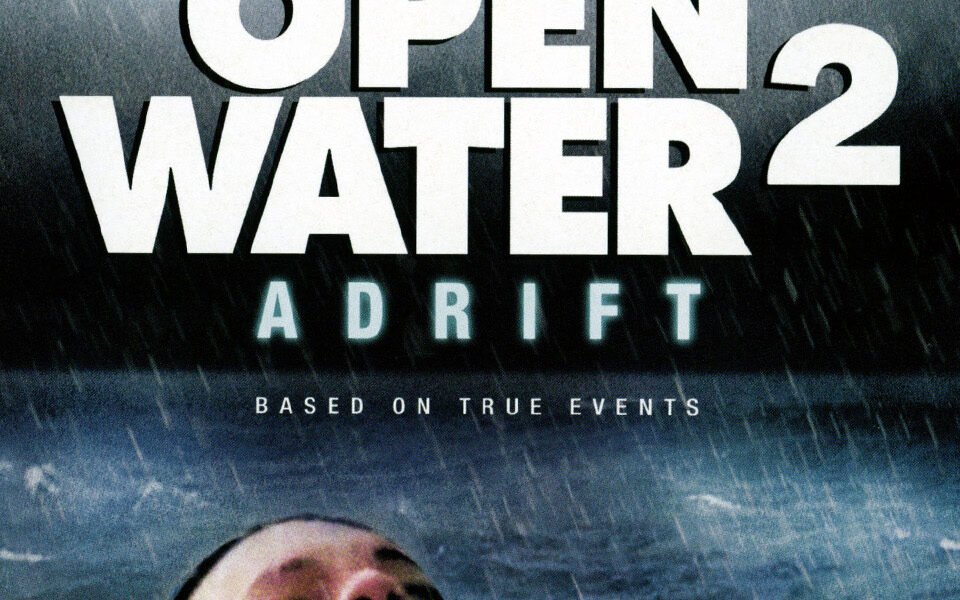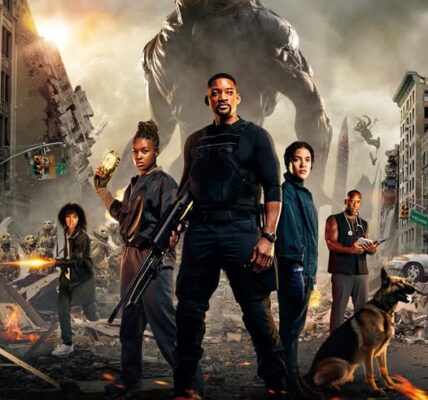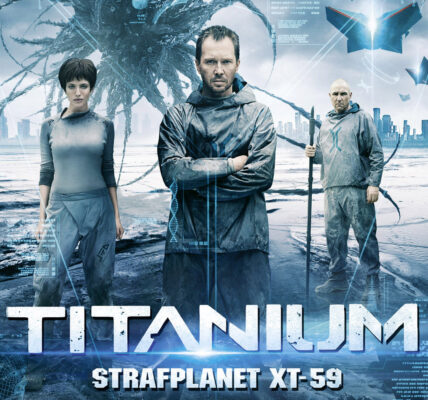Movie Overview
- Title: Open Water 2: Adrift
- Release Date: 2006 (widely released in 2007 in some markets)
- Genre: Survival Thriller / Horror / Drama
- Director: Hans Horn
- Main Cast:
• Susan May Pratt as Amy
• Richard Speight Jr. as James
• Niklaus Lange as Zach
• Ali Hillis as Lauren
• Eric Dane as Dan
• Cameron Richardson as Michelle - Where to Watch: The film is listed on platforms like TV Insider as “where to watch,” indicating it’s available via streaming or digital rental in some regions.
1. Plot Summary
A group of six long-time friends — Amy and her husband James (who bring along their baby Sarah), Dan (the yacht owner) and his girlfriend Michelle, and longtime friends Lauren and Zach — set out on a weekend yacht cruise.
After enjoying time on the yacht, most of the group decide to swim in the sea, leaving Amy, fearful of the water, and Dan on board with the baby. Amy is aquaphobic due to a childhood drowning incident involving her father.
Dan, trying to coax Amy out, picks her up and jumps into the water with her. Once everyone is swimming, they discover that no one lowered the boarding ladder — leaving them unable to climb back onto the yacht. The sides are too smooth, the deck too high, and the ladder is out of reach.
Stranded in open water, the group fights exhaustion, panic, and internal conflict as they attempt various survival measures (making ropes from clothing, climbing attempts, diving under the boat) while the baby remains onboard. One by one, accidents, despair, and harsh conditions whittle them down. In the end, Amy and her baby are the only certain survivors; Dan’s fate is ambiguous.
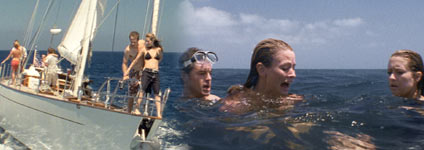
2. Notable Elements
What Stands Out / Strengths
- Tension from a simple premise: The central “forgot to lower the ladder” mistake is mundane, yet the film successfully escalates it into life-and-death stakes, making the ordinary feel terrifying.
- Isolation in open water: The beauty and vastness of the sea contrast with the characters’ helplessness. The cinematography uses wide, empty expanses of ocean to emphasize how small and vulnerable they are.
- Relatable fears / emotional stakes: Amy’s aquaphobia adds psychological depth; her fear is real, and her internal struggle is more than just physical. That personal baggage raises the emotional stakes.
- Gradual breakdown of composure: The film’s pacing allows tension to build — characters start cooperative, but as fatigue and desperation mount, conflict and panic take over. The gradual deterioration feels organic at times.
Weaknesses / Shortcomings
- Character Logic and “stupidity”: Many critics and reviewers point out moments where characters act illogically or make poor decisions that strain suspension of disbelief.
- Thin character development: Because the survival situation dominates, characters often feel like archetypes (the panicker, the leader, the skeptic) rather than fully fleshed individuals. Some viewers struggle to empathize deeply.
- Ambiguous / multiple endings: The film reportedly filmed two endings, one bleak and one slightly more hopeful. This ambiguity can feel unsatisfying or confusing to some audiences.
- Predictability and melodrama: Some plot beats (conflicts, breakdowns, accidents) feel unavoidable or melodramatic, less surprise than escalation on rails. Critics note the deaths are often due to poor judgment rather than surprising peril.
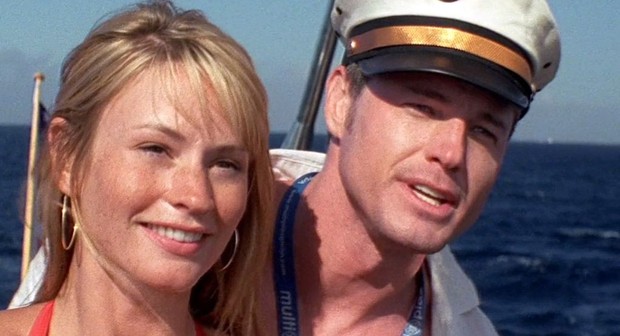
3. Themes & Messages
- Small mistakes with large consequences: The film underscores how a tiny oversight (not lowering a ladder) can cascade into disaster. It warns about complacency and assumption.Advertisement
- Fear, trauma & confrontation: Amy’s fear is rooted in personal trauma. Her arc involves confronting visceral fears in an extreme situation. The ordeal forces her to act despite those fears.
- Human nature under pressure: In survival mode, virtues and flaws emerge. The film examines panic, selfishness, sacrifice, cooperation, and the thin veneer of composure.
- Isolation, helplessness & resilience: Stranded in vast waters, the group must face their vulnerability. The story is about how people respond when stripped of all support.
While not a holiday film, the themes of enduring adversity, making small but meaningful choices, and confronting fear can resonate with reflective moods or times of change (seasonal transitions, new year, etc.).
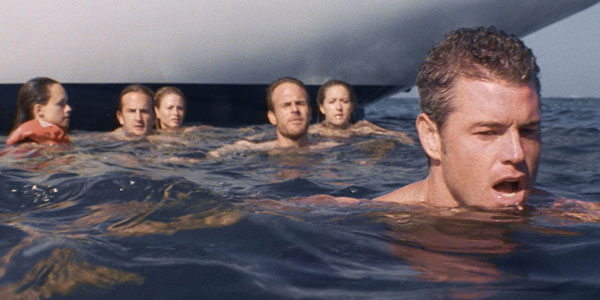
4. Personal Impressions
What I Liked
- I appreciated the rawness: the film doesn’t shy away from fatigue, despair, and the cruelty of nature. It doesn’t glamorize survival.
- Amy’s character arc gives the film emotional weight; her fear, her baby, her guilt or regret make her more than a victim.
- Some moments of ingenuity (makeshift rope from swimsuits, use of diving mask) feel creative, even if risky.
- The open water setting is simultaneously beautiful and threatening. The visuals do a good job of making you feel the vast emptiness.
What I Liked Less / Critique
- The “they acted stupidly” feeling is hard to shake. Some decisions (who climbs, who dives, how they tether rope) seem driven by plot needs rather than character logic.
- The ambiguity in the ending felt more frustrating than poetic. I wish we had clearer emotional resolution.
- Because character depth is light for many of the group, when they perish, the emotional impact is muted.
- Some pacing lulls — the survival slog can drag, especially in moments where danger is delayed to stretch tension.
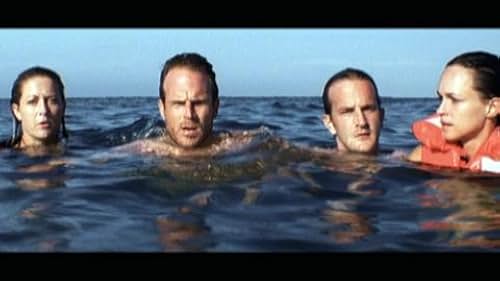
5. Audience Recommendations
You might enjoy Open Water 2: Adrift if you:
- Like survival horror or thrillers with minimal settings and psychological tension rather than monsters.
- Are comfortable with ambiguity and less polished plots.
- Appreciate stories about fear, trauma, and human fragility more than heroism and triumph.
- Want a film to provoke reflection on how we behave in crisis.
Might dislike it if you:
- Prefer strong character backstories, clear motivations, or precise logic.
- Dislike ambiguous, unresolved endings.
- Need more polished storytelling or less “why would they do that?” moments.
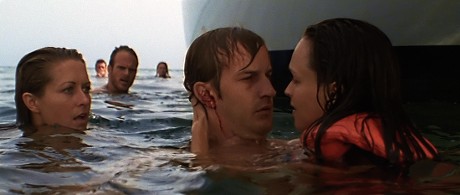
6. Conclusion & Rating
Open Water 2: Adrift is a tense, sometimes frustrating survival thriller. Its strength lies in turning a simple oversight into a horrifying scenario, and in giving Amy’s fear and trauma a lived-in presence. Its flaws — shaky logic, underwritten secondary characters, ambiguous ending — keep it from being a great horror classic. But as a low-to-mid tier survival film, it can grip and chill if you’re willing to go along for the ride.
Final Recommendation: Watch it when you’re in the mood for a raw, lean thriller rather than a polished epic. Don’t expect perfect character logic or emotional catharsis, but do expect a visceral, nerve-wracking tension.
Star Rating: ★★★☆☆ (3 out of 5 stars)
